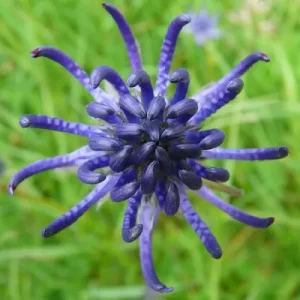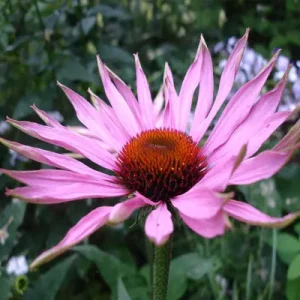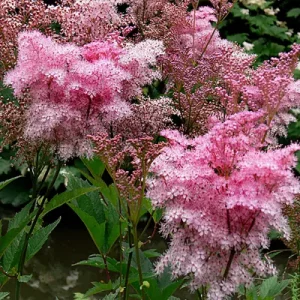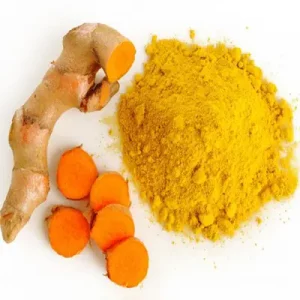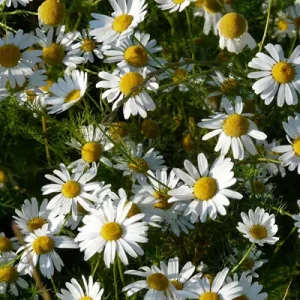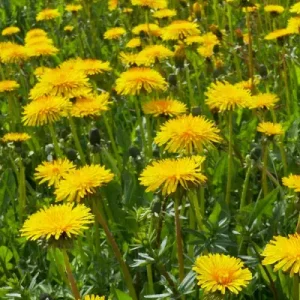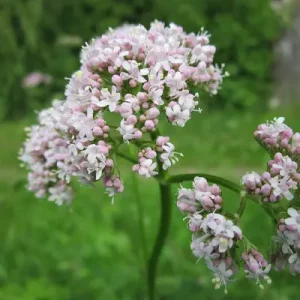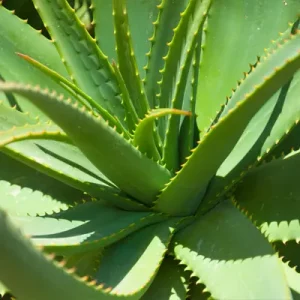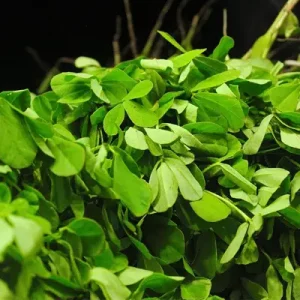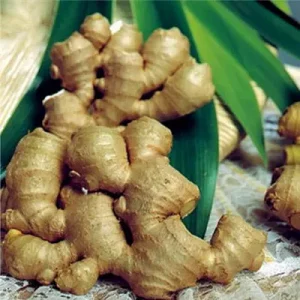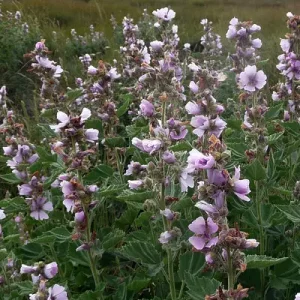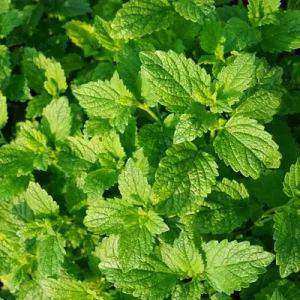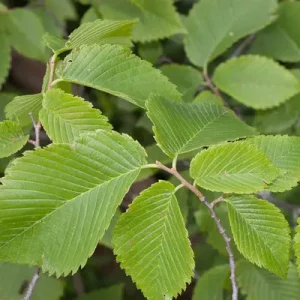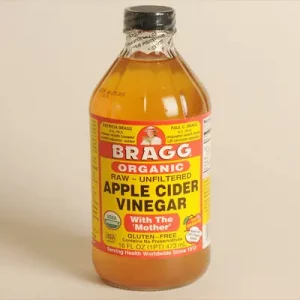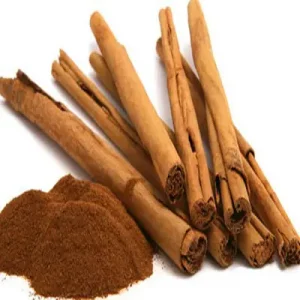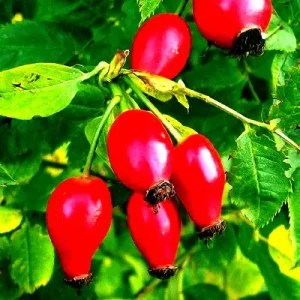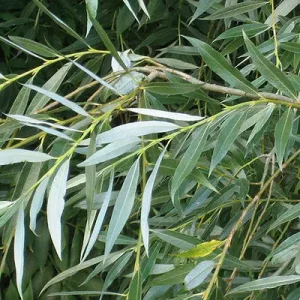These days more and more of us are turning away from pharmaceutical treatments for common ailments but what might surprise you is the wide range of alternative options for common horse health conditions too, and with the side effects of medicines such as NSAIDs this is a good thing. That said though, with their delicate digestive systems, it can be difficult to know what’s okay to feed to horses and what isn’t which is why I decided to write this article.
What are the best natural remedies for horses?
There are some plants, such as aloe vera, fenugreek, and peppermint that have a multitude of benefits for horses while others, such as turmeric and meadowsweet, can be helpful in treating specific health conditions. The table below lists some of the best natural remedies along with what they’re used to treat and their dosages.
| Natural Remedy | Good For | Doses (per day) |
|---|---|---|
| Aloe Vera | Colic Gastric ulcers | 10ml per hh (juice) 40g – 80g (gel) |
| Apple Cider Vinegar | Laminitis | 1/4 – 1/2 cup |
| Chamomile | Colic Gastric ulcer | 3 – 4 dessertspoons (diluted) 1/2 cup (dried) |
| Cinnamon | Laminitis | 2g per 100kg |
| Dandelion | Colic | 20g (dried) 5 plants (fresh) |
| Devil’s Claw | Arthritis Pain relief | 10g per 150kg |
| Echinacea | Arthritis Pain relief | 1 – 2 tablespoons (liquid) 12g – 20g (dried) |
| Fenugreek | Colic Gastric ulcers | 1 tablespoon |
| Ginger | Arthritis Gastric ulcers | Up to 5g |
| Marshmallow Root | Gastric ulcers | Up to 8 tablespoons |
| Meadowsweet | Arthritis | 1 – 2 tablespoons |
| Peppermint | Gastric ulcers | 30g – 40g |
| Rose Hip | Laminitis | 1 – 2 tablespoons |
| Slippery Elm | Colic Gastric ulcers | 10g |
| Turmeric | Arthritis | 1 dessertspoon |
| Valerian Root | Colic | 15g |
| White Willow Bark | Arthritis Pain relief | 2 tablespoons |
Arthritis
Also known as Degenerative Joint Disease (or DJD), arthritis is a common condition that can afflict all animals as well as humans. It’s often slow-developing and causes extremely painful wearing of the joint cartilage. While the pain can reduce a horse’s movement the joints are also prone to stiffness which can further affect their mobility.
What are the best natural treatments for arthritis in horses?
Non-steroidal anti-inflammatory drugs (NSAIDs) such as Bute and Equioxx are often used to treat arthritis but prolonged use of them can have a negative impact on a horse’s stomach and can often lead to ulcers which is why many people are turning to natural alternatives.
Devil’s Claw
Native to southern Africa and Madagascar, devil’s claw is a herb that has been used for centuries for its medicinal properties. It has high levels of a compound known as harpagoside that is renowned for its anti-inflammatory effects. Probably the best thing about devil’s claw is that its pain-relieving benefits (which start to take effect within 30 minutes) are on a par with those of a lot of analgesic medicines.
What to consider when feeding devil’s claw to horses
There are no known side effects of devil’s claw but is classed as a banned substance in many disciplines. It also has a bitter taste which you might need to disguise before feeding to your horse.
How should you feed devil’s claw to horses?
You should give your horse 10g of devil’s claw for every 150Kg of their weight, this should be mixed with their feed twice a day.
Echinacea
Sometimes referred to as coneflowers, echinacea is a member of the daisy family that’s only found in North America and is often used to treat (and prevent) colds in humans, It also has a plethora of compounds that make it ideal for treating a variety of conditions in horses. As well as being able to reduce inflammation and reduce pain, which makes it perfect for horses with arthritis, it can also kill bacteria and viruses and even help to increase red blood cell function.
When applied directly to wounds echinacea has been proven to help speed up the healing process and reduce the chance of infection.
What to consider when feeding echinacea to horses
There are no known issues or side effects with feeding echinacea to horses although it’s advisable to start with a lower dose first.
How should you feed echinacea to horses?
You can either feed echinacea in liquid or dried form but either way, you should mix it thoroughly with your horse’s food. In terms of dosage, you should feed between 1 to 2 tablespoons of liquid or 12g to 20g of dried echinacea to your horse once a day.
Meadowsweet
A native of Europe and Western Asia, meadowsweet (which is sometimes referred to as Japanese spiraea) is a member of the rose family that was introduced into North America during the late 1800s. It’s a herb that has anti-inflammatory properties that are said to be like those of aspirin. Unlike the aspirin though, they’re also gentle of the gut which makes them ideal for long-term use as well for horses that are prone to ulcers.
What to consider when feeding meadowsweet to horses
While it is generally a pleasant smell (and taste) meadowsweet can have a subtle almond flavor which some horses may not like. If your horse won’t eat it you can mix in a little bit of dried peppermint to hide the taste.
How should you feed meadowsweet to horses?
Meadowsweet normally comes in a dried powder form and should be mixed with your horse’s food. Depending on the severity of your horse’s arthritis you can feed 1 to 2 tablespoons a day.
Turmeric
You might be more familiar with the culinary benefits of turmeric but it has a lot of health benefits too. It’s highly praised for its anti-inflammatory and antioxidant properties which is why it’s so good for horses with arthritis. As well as dealing with the pain it can also help to reduce joint stiffness and therefore help the horse to move more freely.
Like a lot of natural anti-inflammatories, turmeric doesn’t have any negative effects on the gut either.
What to consider when feeding turmeric to horses
While it’s by no means conclusive, there is some evidence that the curcumin (the compound that gives it its yellow color) in turmeric can affect how a horse metabolizes iron which can lead to the development of anemia. As a precaution, it’s not recommended to give turmeric to horses already suffering from anemia or those with any chronic disease.
How should you feed turmeric to horses?
It can be difficult for horses to absorb turmeric (just as it can be for us) so it’s better to mix 1 dessertspoon of turmeric with a little bit of ground black pepper and around 2 tablespoons of oil (flaxseed is best but you can also use coconut, linseed or olive oil). This should then be mixed into a paste before adding it to your horse’s feed and mixing again.
Colic
A general term for any abdominal pain, colic is probably the most common condition affecting horses and certainly the biggest worry for horse owners. In its mildest form, it’s nothing more than a stomach ache but it can be as severe as a twisted or displaced gut that may require life-saving surgery.
What are the best natural treatments for colic in horses?
It’s not known why but studies have indicated that horses who have suffered a bout of colic are around five times more likely to suffer from it again which is why it’s a good idea to know how best to prevent it. There are a number of ways of doing this but adding a few natural ingredients to your horse’s feed is by far the best, and most effective, way of doing this.
Chamomile
Like echinacea, chamomile is a member of the daisy family that is known for its anti-inflammatory properties, but unlike echinacea, it can also be used to treat colic in horses. For centuries it’s been used as a relaxant but it’s only recently been discovered that it can also help to relax the digestive system too. This means that chamomile can be used to help food flow through a horse’s digestive system smoothly, making it perfect for not only treating colic but also for reducing the chances of it returning.
Chamomile’s digestive relaxant properties mean that it is also great for treating and preventing ulcers too.
What to consider when feeding chamomile to horses
There are no side effects associated with feeding chamomile to horses but some horses prefer the taste of the flowers rather than the stems.
How should you feed chamomile to horses?
You can either mix 1/2 a cup of dried chamomile with your horse’s food or, if the weather is cold, make them a chamomile tea and then mix that with their food. To make the tea you can either add 4 to 6 tea bags or 3 to 4 dessertspoons to a liter of boiling water, when it’s cooled down you should remove the tea bags if you used them and mix the tea with your horse’s feed.
Dandelion
If you have dandelion growing in your pasture leave it there and let your horse eat it whenever he wants to. As well as being great at boosting your horse’s digestion it will also work to stimulate his appetite and has a mild laxative effect, both of which will help to keep his entire digestive system healthy. On top of all of this, it is also a good natural source of calcium, iron, potassium, and beta carotene, all of which help to keep your horse healthy.
What to consider when feeding dandelion to horses
Dandelion is perfectly safe for horses but false dandelion (which is also known as flatweed) is thought to cause a condition known as stringhalt if too many are eaten. It can also result in the breakdown of the myelin sheath that covers the nerves.
How should you feed dandelion to horses?
If you allow your horse to eat dandelion while he’s turned out you don’t need to worry about feeding him any extra but if you don’t then you can either feed him fresh or dried dandelion. If you’re feeding it fresh then you should give your horse around 5 dandelions (including the root) a day, whereas if you’re feeding it dried then you can mix 20g with his food.
Valerian root
Sometimes referred to as ‘nature’s Valium’, valerian root has been used as a medicinal herb for thousands of years (its benefits were first documented by Hippocrates in around 440BC) and is extremely popular for its sedative effects. While this may not seem helpful to horses at first it is often used to relieve nervous tension and can (when combined with chamomile) be used to calm an unsettled digestive system. This makes it ideal for treating colic as well as cramps and constipation.
What to consider when feeding valerian root to horses
Valerian root is considered a banned substance by many organizations including the FEI and Jockey Club so you should avoid giving it to your horse at least four days before a competition.
How should you feed valerian root to horses?
Valerian root is normally sold in its dried form, 15g of which should be added to your horse’s food once a day.
Gastric Ulcers
More often than not gastric ulcers are caused by stress but can also be a side effect of some medication (such as NSAIDs). Whatever the cause they are extremely painful and can affect a horse’s appetite, personality, and even their appearance.
What are the best natural treatments for gastric ulcers in horses?
Ulcers occur when the gastric acid erodes the lining of the stomach wall so the best form of treatment not only helps to deal with the pain but also works to protect the delicate lining from the acid.
Aloe Vera
Despite being widely excepted as a miracle plant that can treat so many ailments and complaints, Aloe Vera is actually considered an invasive species in many parts of the world. That said though it is extremely high in digestible fiber which means it can help to soothe the digestive tract while also working to protect it. In fact, research has shown that Aloe Vera can reduce the acid in the stomach just as effectively as omeprazole.
What to consider when feeding Aloe Vera to horses
There are no real problems with giving Aloe Vera to horses but it’s worth noting that its high fiber content means that, if horses consume too much, it can have a laxative effect.
How should you feed Aloe Vera to horses?
Aloe Vera is available as a juice, which can be mixed with your horse’s food, or as a gel that can also be mixed with food or can also be fed directly to your horse. If you choose to give your horse Aloe Vera juice then you should add 10ml for every hand of his height. If, however, you prefer to give your horse gel you can either syringe 20g to 40g directly into their mouth or add the same amount to their feed.
Fenugreek
A very versatile plant, fenugreek has been a popular ingredient in many different cuisines around the world for centuries but its medicinal benefits are still being explored. Like Aloe Vera, it’s good for soothing gastrointestinal inflammation because it works to line the stomach and intestine. It’s also good for stimulating a horse’s appetite which will also help to reduce the chances of ulcers reoccurring.
What to consider when feeding fenugreek to horses
Fenugreek is very beneficial to horses and doesn’t have any side effects but, because of the effects it has on a horse’s digestion, it can cause diarrhea if they have too much.
How should you feed fenugreek to horses?
You should give your horse a tablespoon of fenugreek seeds with their food every day but you can either add it as is to their feed or grind the seeds and mix them with honey, lemon juice, and green tea. This is especially good on cold days as you can add the tea to their food to warm them up.
If you prefer to give your horse the fenugreek as a herb (in so much as it’s cut and dried) you can do this by adding 50ml for every 500Kg of their weight to their food.
Ginger
I don’t know about you but when I was growing up I was always told that eating a little bit of ginger every day would help to digest your food but would also prevent indigestion. Like most kids, I didn’t really take much notice of this but in recent years I’ve discovered just how amazing it can be. Not only can it help to reduce inflammation but it also has antiseptic properties which is good for treating gastric infections. The best thing about it though is that it reduces the levels of a bacteria (known as H. Pylori) that can cause ulcers. Ginger can also reduce the risk of NSAIDs causing ulcers too.
What to consider when feeding ginger to horses
Ginger is super good for horses but it does have a strong taste that some horses might not like. If this is the case for you then try mixing it with a little bit of honey to disguise the taste.
How should you feed ginger to horses?
You can feed dry ginger to your horse but it’s better to mix it with boiling water (making a herbal tea) and then add it to your horse’s feed. Either way, you shouldn’t give them more than 5g a day.
Marshmallow
I’m not suggesting you should go and buy your horse a big bag of marshmallows but feeding him marshmallow root can help to heal ulcers as well as reduce the chances of them coming back again. It’s also known that marshmallow root can help to improve the health of your horse’s entire digestive system, including helping with any colon issues.
What to consider when feeding marshmallow to horses
If your horse has loose manure then marshmallow root will help with this, but on the flip side, this means that it’s not advisable to give it to horses with dry or hard manure. If this is the case for you then giving your horse licorice extract will have the same benefits.
How should you feed marshmallow to horses?
Giving your horse 2 to 5 tablespoons of marshmallow root every day (even if they don’t have an ulcer) will help to keep their digestive tract in tip-top condition. If, however, they do suffer from gastric ulcers you should increase that to no more than 8 tablespoons a day.
Peppermint
It’s no secret that horses love mints but what you might not have realized is that, as well as making your horse’s breath fresher, mints (peppermint in particular) can also help to alleviate stress and nervousness in horses (and in people too). This is especially good for horses whose ulcers are caused by stress and tension. Peppermint is also known to stimulate a horse’s appetite which again is beneficial to horses with ulcers.
What to consider when feeding peppermint to horses
While you shouldn’t give your horse too many peppermint sweets, feeding them fresh or dried mint is perfectly okay and won’t have any negative effects.
How should you feed peppermint to horses?
If you’re able to grow your own mint then it’s a good idea to buy a small pack of seeds, you can then pick a handful of leaves every day and feed them to your horse either with his food or on their own. If you’re not able to grow it yourself then you can buy dried mint and feed approximately 30g to 40g a day.
Slippery elm
Also known as an Indian elm, the inner bark of the slippery elm tree (which is a member of the elm family) is a demulcent which means it’s ideal for relieving inflammation, especially in the stomach. It does this by stimulating the production of mucus which in turn helps to coat the stomach lining and protect it from being eroded by gastric acids.
What to consider when feeding slippery elm to horses
As long as you follow the guidelines there’s no reason at all why you can’t give slippery elm to horses of all ages, from foals to old horses.
How should you feed slippery elm to horses?
Slippery elm is often taken in conjunction with Aloe Vera so it’s best to mix 2 to 4 tablespoons of slippery elm with 10ml of Aloe Vera juice for every hand of your horse’s height and then add that to their food.
Laminitis
Laminitis is an extremely common and painful condition that affects the soft tissue, known as the laminae, in the hoof. It can be caused by a variety of things such as obesity, spending long periods of time on hard surfaces, stress and even eating too much rich grass.
What are the best natural treatments for laminitis in horses?
The multitude of causes can mean that it’s difficult to treat but the key is to keep the hoof healthy and maintain a good blood supply, that way external factors are less likely to affect your horse.
Apple cider vinegar
Due to its acidic nature, this might sound like a strange thing to recommend but it’s exactly this that can make it so good. The reason for this is that it helps to acidify the stomach which in turn increases the horse’s ability to digest and absorb minerals, therefore reducing the chance of laminitis recurring. It can also slow the absorption of sugar into the bloodstream which is especially helpful in ponies and horses that are insulin resistant.
What to consider when feeding apple cider vinegar to horses
Apple cider vinegar is highly acidic so it shouldn’t be given to horses that suffer from ulcers or are prone to colic.
How should you feed apple cider vinegar to horses?
You should add 1/4 to 1/2 cups of apple cider vinegar to the same amount of water before mixing it thoroughly then adding it to your horse’s feed. It’s important to mention though that when giving your horse apple cider vinegar you use a plastic bucket. This is because the acid in the vinegar will erode metal buckets (regardless of whether or not they’ve been galvanized), over time releasing minerals into your horse’s feed.
There are a lot of different types of apple cider vinegar on the market these days but you should only give your horse the raw, unfiltered type because this hasn’t lost any of the natural minerals.
Cinnamon
Not only is cinnamon antioxidant-rich it’s also a great digestion aid and can help with balancing a horse’s blood sugar levels, something that is really good for horses that are prone to weight gain. Cinnamon is also ideal for horses that suffer from laminitis because they’re insulin resistant, this is because it can imitate the effects of insulin by increasing the glucose in cells.
What to consider when feeding cinnamon to horses
Cinnamon is very safe to give to horses but it’s not recommended for pregnant mares or those that have recently given birth. This is because it can stimulate the uterine and in some cases decrease the strength of contractions.
How should you feed cinnamon to horses?
You should add 2g of cinnamon for every 100Kg of your horse’s weight to his food every day. You can either add this direct or mix it with a little water and then add that to the dry food.
Rose hip
Wild horses have been eating rose hip for thousands of years but it’s only been in the past few decades that we’ve fully understood the benefits it can have on horses with laminitis and those that are prone to it. Essentially rosehip is perfect for improving the health and strength of a horse, it does this by increasing the blood flow to the capillaries and skin of the hoof.
What to consider when feeding rose hip to horses
While rose hip can be good for laminitis it also has higher sugar levels so shouldn’t be fed to horses that are insulin resistant. It’s also advisable to only feed a small amount and to do so in conjunction with apple cider vinegar, this will help your horse to regulate his sugar levels.
How should you feed rose hip to horses?
You can either cut roughly ten rose hip buds into quarters and add them to your horse’s food or, if you’d prefer, you can make a tea with them and then add that to his food instead. If you choose to make rose hip tea for your horse then you simply add the same amount of dried buds to boiling water, stir for a few minutes then, when it’s cooled down add to your horse’s feed.
Natural pain relief alternatives for horses
There are so many pharmaceutical medicines designed specifically to help horses deal with all types of pain but the problem with these is that they generally have side effects if they’re used for prolonged periods of time. The good news though is that there are a number of natural alternatives to prescribed drugs, plants such as devil’s claw and turmeric have already been mentioned about so I’ve only included ones here that I haven’t already talked about.
White willow bark
The bark of the white willow has all of the analgesic properties of prescribed pain killers but without their drawbacks. White willow bark can be used to treat all types of pain (both muscular and nerve) but its anti-inflammatory ability means it’s especially good for muscular pain such as arthritis.
What to consider when feeding white willow bark to horses
There’s no conclusive evidence but recent studies have indicated that you shouldn’t feed white willow bark to horses that suffer from ulcers. This is because the bark contains salicin which, in large doses, can encourage the production of acid in the stomach and therefore increase the risk of ulcers.
How should you feed white willow bark to horses?
You should mix 2 tablespoons of white willow bark powder with your horse’s food every day, but if your horse needs more you can add hawthorn berries too. You can either add fresh hawthorn berries (around 5 to 10 berries) to your horse’s feed or, if you’d prefer, you can add between 10g and 15g of dried hawthorn berry instead.
IMPORTANT: Please note
If your horse needs medical treatment for any condition at all you should speak to your vet and equine nutritionist before using any natural remedy. While the ingredients mentioned in this article will help to treat your horse it’s also worth noting that all horses are different and something that works for one horse may not work for another.
If you do decide to treat your horse naturally you can’t just feed them a cocktail of herbs and then leave them to it, hoping for the best. Like all medicine (natural or synthesized) you should follow the guidelines and feed your horse accordingly. You should also monitor your horse and stop immediately if you notice anything untoward.
Shop the article
If you want to buy any of the natural ingredients I mention in this article you can order them directly from Amazon using the links below. While I do make a very small percentage on each sale it won’t cost you more and I only ever recommend products I feel would be beneficial and would never recommend a product just because of a commission.
- Aloe Vera (gel)
- Aloe Vera (juice)
- Apple cider vinegar
- Chamomile (dried)
- Chamomile (tea)
- Cinnamon
- Dandelion (dried)
- Dandelion (seeds)
- Devil’s claw
- Echinacea (dried)
- Echinacea (liquid)
- Flaxseed oil
- Fenugreek
- Ginger
- Harwthorn berries
- Marshmallow root
- Meadowsweet
- Peppermint (dried)
- Peppermint (seeds)
- Rose hip (dried)
- Rose hip (seeds)
- Slippery elm
- Turmeric
- Valerian root
- White willow bark
Further reading
- Why coconut oil is good for horses
- Surprising food your horse should eat
- Do horses like to eat bananas?
- Are pumpkins safe for horses?
- Can horses eat sweet potatoes?
- Dos & don’ts of feeding treats
- Are watermelons safe for horses?
- What to avoid feeding your horse
I hope you found this article helpful. If you did I’d be grateful if you could share it please as it would really help me.
Recommended products
Over the years I have tried hundreds of different horsey products, from various blankets and halters to different treats. Some I’ve loved, others I’ve hated but I thought I’d share with you my top all-time favorite products, the ones I never leave the yard without. I’ve included links to the products (which are in no particular order) that I really think are great.
- Horse Knots by Reference Ready – If you’re like me and enjoy pocket reference guides then you’ll love this knot tying guide. These handy cards can easily fit in your pocket or attach to the saddle for quick reference. They’re waterproof, durable and are color coded to make them easy to follow.
- Mane ’n Tail Detangler – Even if you never show your horse you’ll need to detangle his tail from time to time (and possibly his mane too) which is always a challenging chore! I’ve found that if I run a little bit of detangler through my horse’s tails every few days it stops them from getting matted up and makes combing them easy, even if they’re coated in mud. I don’t know if I should admit to this or not but it also works wonders on my hair.
- TAKEKIT Pro clippers – Over the years I’ve tried a lot of different clippers and while some were obviously better than others I found these to be by far the best. They are heavier than a lot of other clippers but for me, that’s a good thing, it makes them feel more sturdy and hardwearing. On top of that they have a range of speeds so are just as good for clipping your horse’s back as they are his face. I also like the fact that they come in a handy carry case but that’s not for everybody. The company that makes them is super good and incredibly helpful too, a real bonus these days. The only thing I wasn’t keen on was the fact that it doesn’t come with any oil, but that’s not a major problem as it’s not difficult to buy lubricant.
- Shire’s ball feeder – There are so many boredom buster toys out there but I like to use these every day, regardless of whether or not my horses are bored. I find that it helps to encourage my horses to problem solve by rewarding them with treats (or pieces of fruit) but it also mimics their natural grazing behavior which helps to keep them calm and de-stressed.
- Horse safe mirror – This is a strange one that many people are surprised about but I like to put horse safe mirrors in the trailers as well as in the quarantine stalls. It helps to prevent the feeling of isolation by giving the impression of other horses being around. Being herd animals horses can get extremely stressed when they feel that they’re on their own but with these stick-on mirrors, they believe that at least one other horse is with them.
- Rectal thermometer – I know this isn’t glamourous at all but it’s vital for your horse’s well-being to be able to check their temperature and a rectal thermometer is the easiest way of doing this which is why I’ve added it to the list.
Shopping lists
I’ve also put together a few shopping lists of essential items that I’ve found helpful over the years. I’ve broken the lists down into different categories rather than put everything in one massive list 😉

